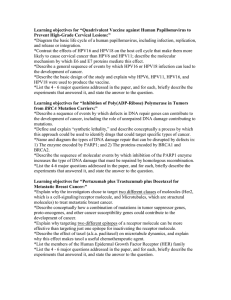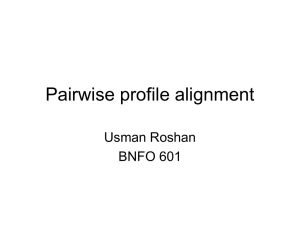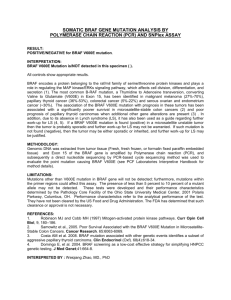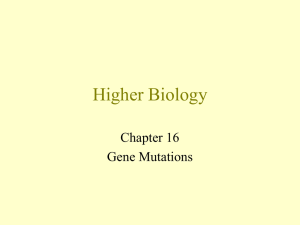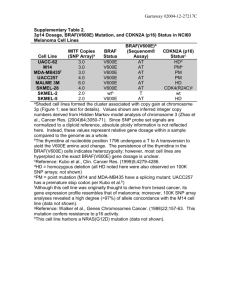SUPPLEMENTARY METHODS SNaPShot PCR assay for BRAF
advertisement
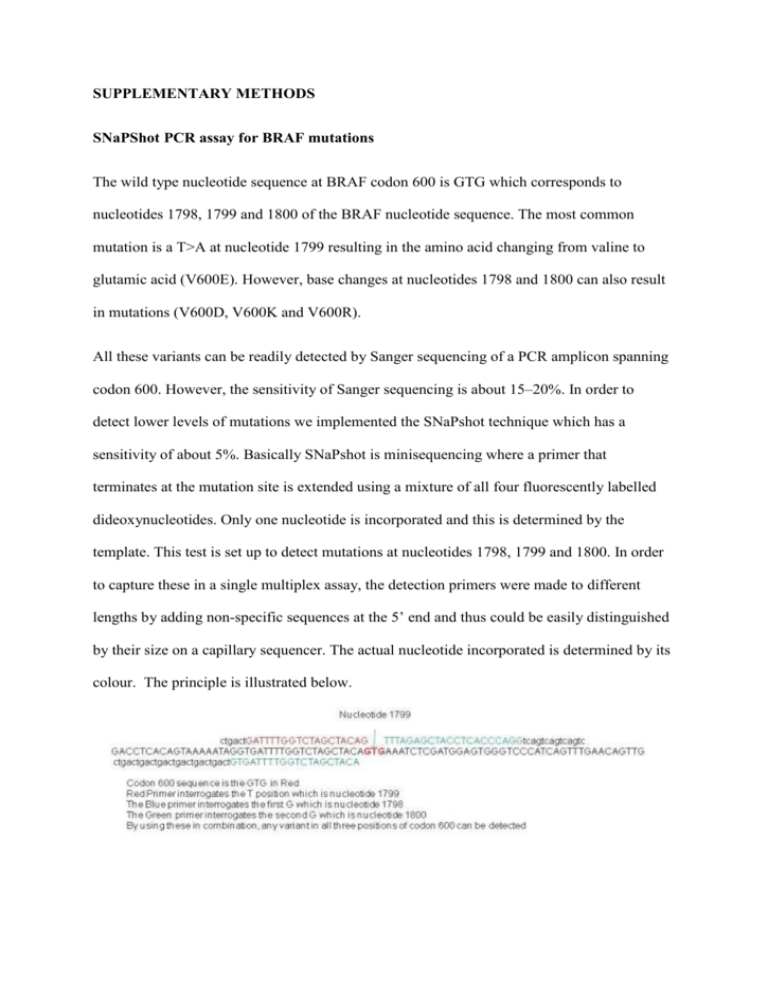
SUPPLEMENTARY METHODS SNaPShot PCR assay for BRAF mutations The wild type nucleotide sequence at BRAF codon 600 is GTG which corresponds to nucleotides 1798, 1799 and 1800 of the BRAF nucleotide sequence. The most common mutation is a T>A at nucleotide 1799 resulting in the amino acid changing from valine to glutamic acid (V600E). However, base changes at nucleotides 1798 and 1800 can also result in mutations (V600D, V600K and V600R). All these variants can be readily detected by Sanger sequencing of a PCR amplicon spanning codon 600. However, the sensitivity of Sanger sequencing is about 15–20%. In order to detect lower levels of mutations we implemented the SNaPshot technique which has a sensitivity of about 5%. Basically SNaPshot is minisequencing where a primer that terminates at the mutation site is extended using a mixture of all four fluorescently labelled dideoxynucleotides. Only one nucleotide is incorporated and this is determined by the template. This test is set up to detect mutations at nucleotides 1798, 1799 and 1800. In order to capture these in a single multiplex assay, the detection primers were made to different lengths by adding non-specific sequences at the 5’ end and thus could be easily distinguished by their size on a capillary sequencer. The actual nucleotide incorporated is determined by its colour. The principle is illustrated below. The interpretation is assisted by the table below. Mutation 1799 1800 1798 W/T T C G V600R G C A V600K A C A V600E A C G V600E2 A T G V600M T C A V600G G C G V600D A A G The colours of the dideoxynucleotides used are Dideoxy G Blue Dideoxy A Green Dideoxy C Black Dideoxy T Red
